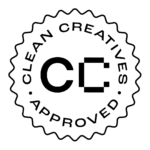Detailed audience research is the first commandment of good marketing. It gives your entire strategy focus:
- How you develop your value proposition
- The look and feel of your brand
- The words you use to communicate with customers
- The channels you focus on
- Your sales process
- Your search marketing strategy
You should know your customers like you know your friends – so you can craft content that resonates with them. The three key things you need to understand are:
- Motivations
- Pains
- Why should they be interested in your service?
These fundamental facts will help you answer:
- Is the potential market for your product or service large enough?
- Do you need to alter your business idea to best appeal to this audience?
- Should you tailor your product or service in some way to maximise effectiveness?
- How can you target your marketing efforts to optimise reach with the most promising potential buyers?
With these answers, you can truly shape your offerings and messages around people who are most likely to buy from you.
Let’s look at how you should carry out meaningful audience research.
A Deeper Understanding
Step 1: go old school
There are myriad ways you can conduct audience research online:
- Keyword research
- Forums
- Survey tools
- Demographic research
- Social media reports
- Market research
- Mintel
The list is endless. But there is one method that reigns supreme: talking directly to your customers. Nothing compares to the details you’ll gain from face-to-face interactions.
At the annual Platform ExO Leadership Conference, Daniel Priestley was the headline act. The serial entrepreneur and founder of the business accelerator, Dent Global, explained the importance of getting back to basics.
His advice to over 150 entrepreneurs was to get out with a clipboard and speak directly to your clients and prospects to understand:
- Their challenges
- Pains
- What will make their lives easier
- The places they hang out both on and offline (such as websites, forums, social media channels and groups, networking groups, associations and magazines)
Try to not make assumptions. To get real data you can use, you need to hear it from them first.
Step 2: Ask the right questions
If you ask the wrong questions, you could make costly mistakes. For example, ask customers in your shop to rate their satisfaction from 1 (not satisfied) to 5 (extremely satisfied) and what do you get?
Not much. It doesn’t dive deep into customer opinions to reveal problems you can fix. And not all of us are comfortable slamming a business within its four walls. Giving a quick “5” is a great way to get out of an uncomfortable situation. And it could mislead you into thinking everything is hunky dory when it’s not!
Think about how each question will help you reach your goals. You could separate them into different categories:
- Understand buyer behaviour: e.g. “How often do you purchase _______?”
- Demographic questions: e.g. “Where do you live?”
- Understanding buyer motivators: e.g. “What problems motivate you to purchase _______?”
By asking specific and relevant questions that dig deeper, you gain golden insights into your prospects and customers. Information that can be leveraged to increase engagement and drive sales.
Step 3: Speak to those on the front line
You have so much knowledge within the business. Are you capitalising on it?
Those in the business who deal directly with customers and prospects have precious intel: information you can incorporate in your market research.
Salespeople, client handlers and account managers converse daily with clients – within these conversations lies powerful data you can use to bolster your influence.
For example, sales reps are actively listening to your prospect’s questions, what interests them and their number one needs. Access this information and you’ll understand what triggers sales.
And let’s not forget your customer service team. They will be able to provide insight into the words customers use (i.e. possible keywords for SEO) and what concerns are commonly brought up.
Step 4: Take this information to the next level and get proof
Once you have some founding insight into your customers’ pains and challenges, take it to the next level through additional market research. You need to understand:
- What they search for online to find solutions to their problems: this will be the foundation of your search marketing strategy across PPC and SEO.
- What social media channels they use and which channels will be most effective for your business.
Using ad-targeting tools and demographic research, you should be able to find which channels have the biggest audience opportunities for your brand.
Monitoring your various social networks will help you discover what is being said about your brand, your competitors and topics relevant to your business.
You could also target your market through third-party websites, publications or network organisations. Learning the number of subscribers, members and visitors to these channels will reveal the best places to spend your money.
Do wider quantitative research. Take the insight you have gleaned from your qualitative research – your conversations – and conduct new surveys to ask more focused questions about your product and service.
This can easily and quickly be distributed through an online survey which you can share across all your offline and online channels to add further depth to your market research. Here are some other alternatives:
- Host a free event such as a workshop, talk or webinar based on an industry topic. Ask people who attended to be interviewed. By first giving people value, you’ll increase your chances of them wanting to help you out.
- Send customer satisfaction surveys to people who have made a recent purchase. Out of the people who reply, follow up and ask if they’d be willing to be interviewed.
- Assemble focus groups: Get feedback from a small group of consumers who fit your ideal customer profile via Q&A sessions and group discussions.
- Consider if there are any partners with the same audience that you can work with to gain further insight on your own products and services, opportunities for future collaborative marketing campaigns.
You can also tap into online resources:
- Quantcast provides free, accurate and dependable audience insights for over 100 million web and mobile destinations
- Alexa transforms raw data into meaningful insights that will help you find your competitive advantage
- Google Trends uncovers where your target customers are predominantly located
- Ahrefs provides a tool to help you identify all the backlinks to any competitors, showing you which industries and third-party websites may be the most interested in what you have to offer. This is one of the best tools for finding SEO and online marketing opportunities.
Step 5: Create Personas
A customer persona is a personal profile of your ideal customer. Pull insights from your market research regarding your audience, including:
- Age
- Gender
- Job title
- Location
- Personal goals
- Fears
Collate this information into individual personas for your business. They are the foundations on which you can build an effective marketing strategy. You can then send these to your content creators so they can target the correct audience with their work and drive engagement.
Customer personas should play a part in all your marketing decisions, from the email lists you or your team create to which social media channels you should focus on.
Final Takeaway
Continue doing customer research to keep refining your products and services.
Keep asking what you can do to improve your customer experience and make their lives easier. Ask them tough questions even if you are uncomfortable with their answers – learning their biggest pains is the best way to improve your customer experiences through your marketing. Above all else, learn from your campaigns – what works, what doesn’t and what you can do better to keep growing.
To learn more about audience research, contact us for an informal chat.


